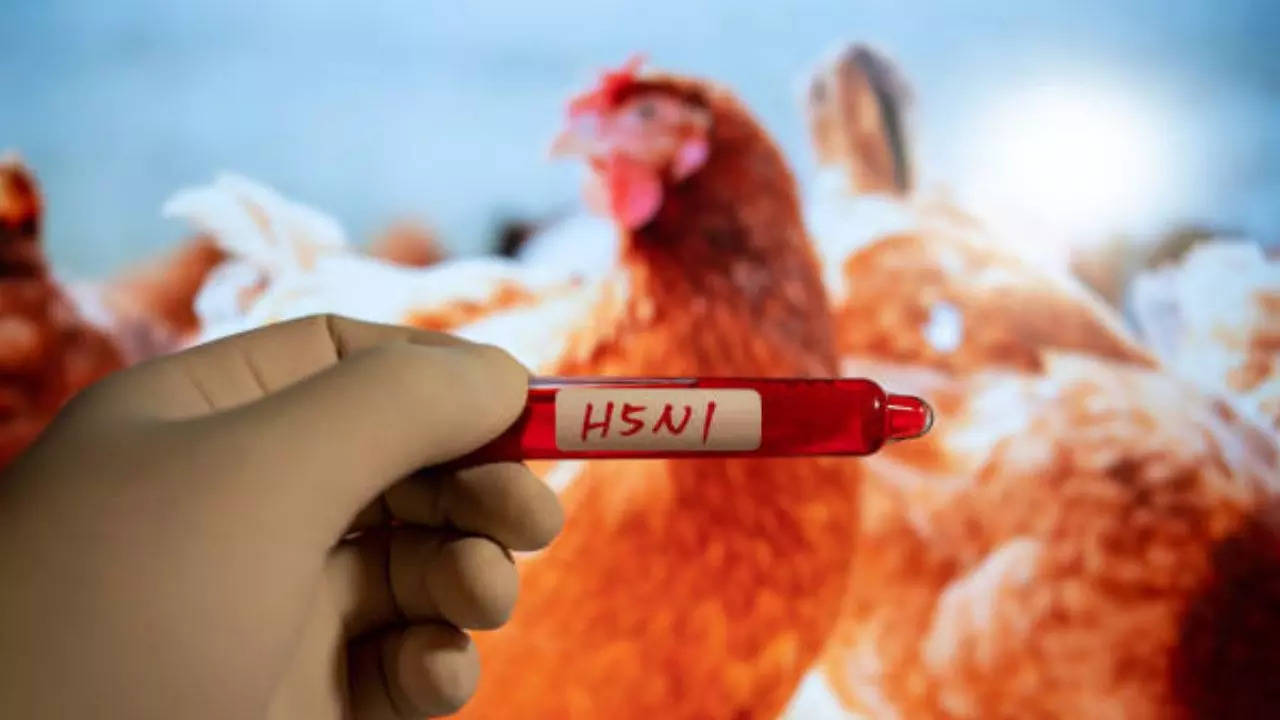
New strain of bird flu in Louisiana raises global health concerns, should we be worried? (Image credit: iStock)
Federal health officials have revealed new disturbing details about the first serious case bird flu Reported in the United States, including one patient hospitalized in Louisiana. The case has raised concern because of mutations observed in the patient’s genetic samples, which could potentially increase the virus’s ability to infect human cells.
According to an update released by the Centers for Disease Control and Prevention (CDC) on December 26, these genetic changes were identified in the later stages of the patient’s infection. Notably, the mutations were absent in virus samples collected from the backyard poultry flock responsible for patient exposure. This suggests that rather than these mutations being widely present in nature, the virus adapted to the human host after transmission.
Experts warn that this development provides H5N1The strain responsible for avian flu has the opportunity to become more friendly to humans. As The New York Times reports, “Each additional human case gives H5N1 more opportunities to adapt to people.” “This has the potential to really harm a lot of people,” said virologist Angela Rasmussen, of the Canadian Vaccine and Infectious Diseases Organization, underscoring the seriousness of the situation.
The CDC clarified that there is currently no evidence of the Louisiana patient spreading the virus to others. However, the observed mutations are unlikely to facilitate person-to-person transmission. Additionally, the Louisiana virus samples are very similar to existing candidate vaccine strains developed for bird flu, offering a measure of preparedness.
However, Rasmussen criticized the lack of active use of these vaccines, especially for high-risk groups such as farmworkers, who face direct contact with infected poultry. “We have the tools, so why aren’t we using them to protect those most vulnerable?” He asked the question.
Why is the Louisiana case the first of its kind?
The case in Louisiana marks an important milestone, marking the first serious illness caused by H5N1 in the United States. The patient was exposed to a backyard poultry flock, an unusual source compared to previous cases, which mainly involved workers at large poultry farms.
The CDC has previously indicated that H5N1 has a history of causing serious illness in humans, including deaths, in other countries. “Avian influenza A (H5N1) virus infections have previously been associated with serious human illness in other countries during 2024 and beyond,” the agency said.
A health alert issued by Louisiana officials on December 13 confirmed that the infected person lived in the southwestern region of the state and had come into contact with sick and dead birds suspected of carrying H5N1.
bird flu cases
Since April 2024, the United States has recorded 66 cases of H5N1 avian flu in humans. Most cases are mild, with symptoms such as conjunctivitis (pink eye) resolving after treatment. However, the Louisiana case stands out as the first example of severe disease.
The highest number of infections are in California, with 37 confirmed cases, followed by Washington with 11 and Colorado with 10. These infections primarily involve farmworkers in close contact with infected poultry or dairy cows.
Notably, earlier this month, health officials in California reported H5N1 infection in a child. The strain found in this case was similar to the virus circulating in animals, although the child had no known direct contact with infected animals. The child has recovered after receiving antiviral treatment, and no person-to-person transmission has been detected.
Wider implications and expert warnings
The Louisiana case highlights the widespread risk posed by its continued spread avian influenzaSince emerging in poultry in 2022, the virus has extended its reach to dairy cows, and earlier this year, it was first detected in pigs. Wild and domestic birds across the United States are serving as reservoirs of the virus, which has also affected more than 900 dairy herds in 16 states.
Dr. James Lawler, co-director of the Global Center for Health Security at the University of Nebraska, expressed concern over the emerging situation. “We should be very concerned at this point,” he told The New York Times. “Nobody should panic right now, but we should really put a lot of resources into figuring out what’s going on.”
Richard Webby, a virologist at St. Jude Children’s Research Hospital, echoed these sentiments, suggesting that animals such as cats, dogs or rodents could potentially contribute to the spread of the virus in some cases.
public health advisor
The CDC has urged individuals with close contact with birds to take precautions to reduce the risk of exposure. This includes backyard poultry owners, hunters and bird enthusiasts. Proper hygiene practices, wearing protective gear when handling birds, and being alert to symptoms are important steps to ensure safety.
While the immediate risk to the general public is low, health officials stress that each human case provides an opportunity for the virus to further mutate. This ongoing adaptation increases the likelihood of more infectious and harmful strains emerging.
the way forward
While vaccines exist for bird flu, their deployment among high-risk populations is limited. Public health experts stress the importance of early detection, surveillance and preventive measures to stop the spread of the virus.
As bird flu evolves, it reflects the interconnected nature of human, animal and environmental health, underscoring the urgency of a coordinated One Health approach to combat emerging infectious diseases.
Get the latest news live on Times Now with breaking news and top headlines from around the world.



